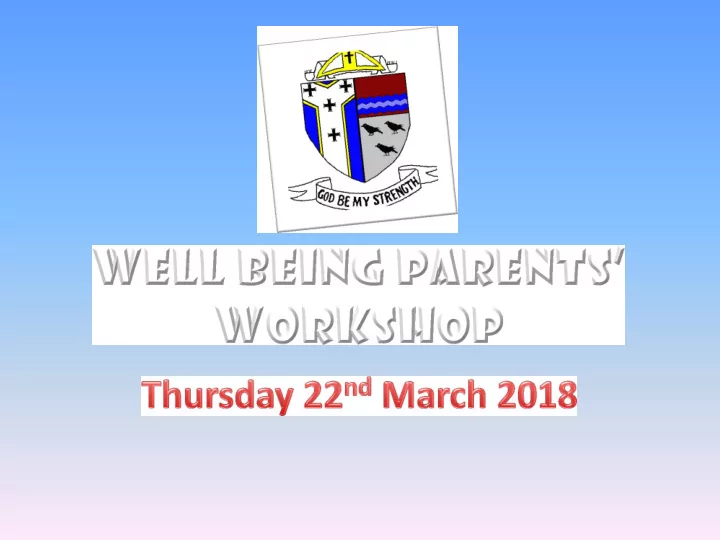

• What is mental health and why the focus on it in schools • What can school and home do to promote good mental health (Protective factors) • Where to go for guidance or support
• 50% of mental health illnesses begin before the age of 14 • 10-20% of adolescents may experience a mental health problem in any given year • Changing complexities and challenges of digital world • National area of focus
Continuum of physical health Continuum of mental health
• Good relationships • High self esteem
• Parents • Peers • Nurturing, caring, rule • Social connectedness enforcing relationship with a supportive peer with a parent carer or group adult figure
• Problem solving • Passion • Ability to problem • An interest, hobby or solve and communicate skill that the child highly values in themselves
• Self esteem is important as it increases resilience and bounce-ability for bumps in the road
• If we feel good about ourselves we are less likely to feel overwhelmed. • More likely to ask for help when we need it.
Self-esteem is the result of experiences that help a child feel capable, effective, and accepted. Children with higher self esteem make friends more easily and find social situation easier. Good friendships and family relationships are a key protective factor.
• feel valued and • feel self-critical and are accepted hard on themselves • feel confident that they • feel insecure, or not as can do what's expected good as other children • feel proud of a job well • focus on the times they done fail rather than the times they succeed • think good things • lack confidence about themselves • feel prepared for • doubt their ability to everyday challenges do well at things
Give children responsibility.
Recognise and celebrate the uniqueness of every individual
• Use purposeful and targeted praise. • Praise effort and persistence (rather than achievement) - links with growth mind-set.
• Time with significant adults • Language they need to talk about mental health • Child friendly language to use for mental health VIDEO LANGUAGE OF MENTAL HEALTH FOR YOUNG CHILDREN
• Make conversations about mental health a normal part of life • Some ways to start a conversation about feelings might be: – “How are you feeling at the moment?” – “You don’t seem your usual self. Do you want to talk about it?” – “Do you fancy a chat?” – “I am happy to listen if you need a chat?” • Ask open questions • Stay calm with the feelings that arise • Offer empathy rather than solutions
The The whole Nothing but the
• good grasp of basic knowledge and skills • reliability, responsibility and resilience • ability to build and maintain relationships • ability to work collaboratively in a team • creativity and problem solving skills IoD Conference 2015 • …which reinforces the development of the whole child • …also the partnership with parents recognising these as our common aims
• “Knowledge and skills have “ever diminishing shelf - lives”: the knowledge and skills needed in the future may not even be known at the time a person attends school, so institutions cannot limit themselves to the transmission of set content. Instead, they need to promote flexibility, openness to new ideas, ability to adapt and courage in the face of the unexpected .” Lai E and Viering, M (1012). Assessing 21 st Century Skills: Integrating Research Findings
NEVER GIVES UP
• School wide development of language and literacy around well being • School can support you: teachers, Inclusion Team, HSLW and ELSA Early referrals for help to professionals • GP
Recommend
More recommend